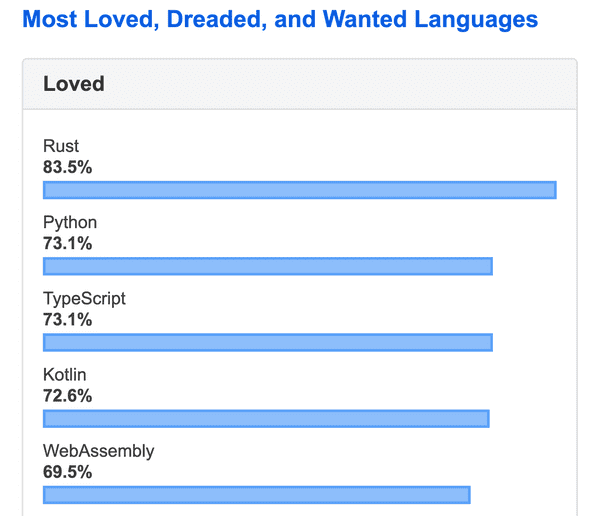The easy way to use Typescript with React
June 23, 2019
Typescript has been one of the most loved languages on stack overflow for several years running.
I didn’t really understand the value of types until I worked on a team.
When multiple people are contributing to a project TS makes it a lot harder to write javascript bugs, and you can trust functions without reading their definitions.
In this video I show…
- the way to start a typescript React app in 10 seconds
- TS + React basics
- how to set up TS + React + webpack from scratch for a project
- how to refactor a React app to TS
If you’re starting from scratch, setting up a TS app is as simple as adding a parameter to create-react-app.
npx create-react-app my-app --typescript
i would recommend starting with create-react-app as a “sandbox” to figure out how things work.
You can start playing around with things like…
Interfaces for props
These types will be enforced anywhere I use this component, both on compilation and even in your IDE.
gist:aj-4/fb470eba79f29b66f7acdd38d3045762
Alternatively, I can set name as an optional field with the question mark
interface IProps {
name?: string,
showTime: boolean
}Structs
Similar to C or Golang, we can have structured objects.
TS enforces rules on objects through an entire data path — you can expect your object to always be a certain shape, regardless of where it is.
It’s best practice to put most (non-prop) interfaces in .d.ts files, which do not need to be imported
gist:aj-4/764604bb562b1c137a0e1721fab182b8
Here we have a person struct with multiple fields.
Good-bye “cannot read property x of undefined” errors
Function typing
We make input and return types explicit.
It’s useful because you can now “trust” functions to do what they say, without reading definitions.
gist:aj-4/51baa06a7f2c484bd081ebfcf6500b5e
Here we expect the person interface as input and return a formatted string message.
If you want to set up TS manually…
By using the typescript webpack loader ts-loader, our transpiler will handle .tsx files and also act as a “compiler” to catch errors.
If your IDE is set up right (VS code is out of the box) then you will also see errors there.
The end result: we will get the exact same build files with a much improved developer experience.
The main steps you need to follow are:
- install dependencies (that you haven’t already):
yarn add react &&
yarn add typescript ts-loader webpack webpack-cli --dev- Add a
webpack.config.jswithts-loadergist:aj-4/4e5db5e5af5ef8d278e5a640056efc35
the important parts are setting the entry point as index.tsx and the ts-loader rule.
If you are refactoring to ts, simply add to ts-loader to the rules section.
...
rules: [
...
{
test: /\.tsx?$/,
use: 'ts-loader',
exclude: /node_modules/
}
]- Next, create a minimal
tsconfig.jsonin the project root.gist:aj-4/49dfc0b096bba7100cb768d6302d78cb
the full set of rules for tsconfig.json are here — vs code also gives you descriptions on mouse-over.
- Now write your
.tsxfiles (or change.js(x)files to.tsx)gist:aj-4/5db7ecba8be67abd10efef45746c34cc - Test by building your app with webpack and fix errors
yarn webpack
